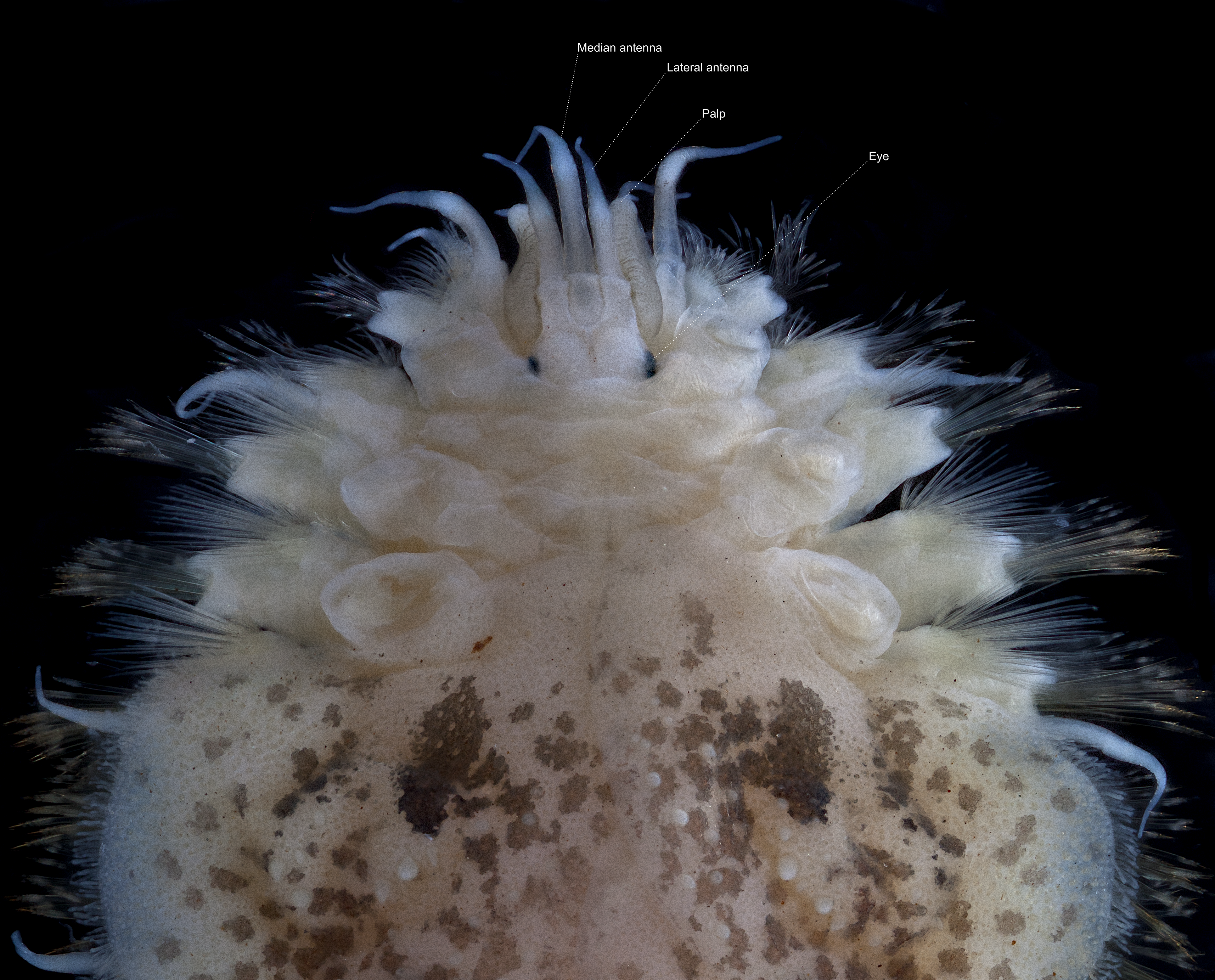prostomium on:
[Wikipedia]
[Google]
[Amazon]
 The prostomium (From
The prostomium (From
 The prostomium (From
The prostomium (From Ancient Greek
Ancient Greek (, ; ) includes the forms of the Greek language used in ancient Greece and the classical antiquity, ancient world from around 1500 BC to 300 BC. It is often roughly divided into the following periods: Mycenaean Greek (), Greek ...
, meaning "before the mouth"; : prostomia; sometimes also called the "acron") is the cephalized first body segment in an annelid
The annelids (), also known as the segmented worms, are animals that comprise the phylum Annelida (; ). The phylum contains over 22,000 extant species, including ragworms, earthworms, and leeches. The species exist in and have adapted to vario ...
worm's body at the anterior end. It is in front of (but does not include) the mouth, being usually a small shelf- or lip-like extension over the dorsal side of the mouth. The prostomium together with the peristomium, which includes the mouth and pharynx
The pharynx (: pharynges) is the part of the throat behind the human mouth, mouth and nasal cavity, and above the esophagus and trachea (the tubes going down to the stomach and the lungs respectively). It is found in vertebrates and invertebrates ...
, make up the annelid head.
Description
The prostomium is part of the head and holds at least part of the brain and often bears sensory structures such as theeye
An eye is a sensory organ that allows an organism to perceive visual information. It detects light and converts it into electro-chemical impulses in neurons (neurones). It is part of an organism's visual system.
In higher organisms, the ey ...
s, antennae and palps. It may function like a kind of overlip when the animal is feeding. The prostomium bears many important taxonomic characters and its shape and composition are important for annelid systematics.
In addition to the eyes, antennae and palps, the prostomium can possess appendages such as tentacle
In zoology, a tentacle is a flexible, mobile, and elongated organ present in some species of animals, most of them invertebrates. In animal anatomy, tentacles usually occur in one or more pairs. Anatomically, the tentacles of animals work main ...
s or cirri. Moreover, some polychaete
Polychaeta () is a paraphyletic class of generally marine Annelid, annelid worms, common name, commonly called bristle worms or polychaetes (). Each body segment has a pair of fleshy protrusions called parapodia that bear many bristles, called c ...
prostomia have a posterior extension or ridge with sensory function, called a caruncle. Another sensory organ, the nuchal organ (or a variation, the nuchal epaulette), is a chemosensory
A chemoreceptor, also known as chemosensor, is a specialized sensory receptor which transduces a chemical substance (endogenous or induced) to generate a biological signal. This signal may be in the form of an action potential, if the chemorecept ...
, ciliated pit or groove at the posterior end of the prostomium.
Appendages
There may be three antennae present: a pair of lateral antennae and one median antennae. These are most commonly simple, tapering structures, but they may also be articulated or ornamented. There are different arrangements of insertion of the lateral and median antennae, with the lateral antenna sometimes inserted ventrally to the median antennae or vice versa, or they may be inserted on the same plane. In some taxa, the lateral antennae may be missing, leaving only a lone median antenna. The palps are paired and innervated structures that tend to be located ventrally and laterally. They are often associated with the mouth and may have a feeding or sensory function. Tentacular cirri can be any sort of elongated, forward (anterior) facing cirri and can occasionally be found on the prostomium.See also
* Peristomium * PygidiumReferences
{{reflist Annelid anatomy